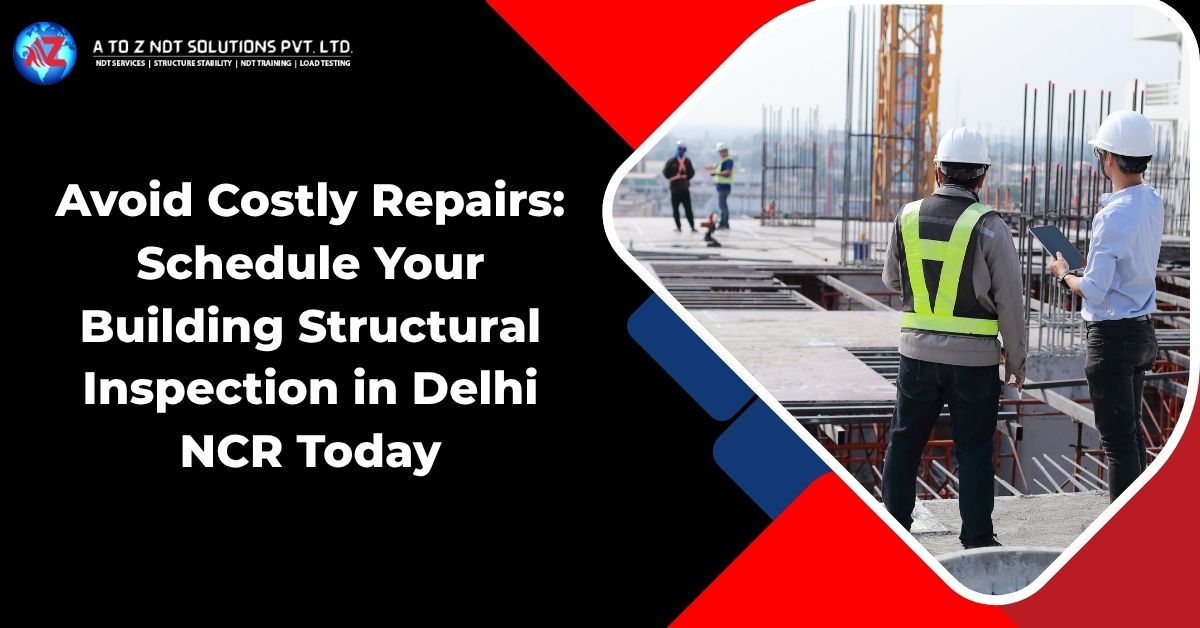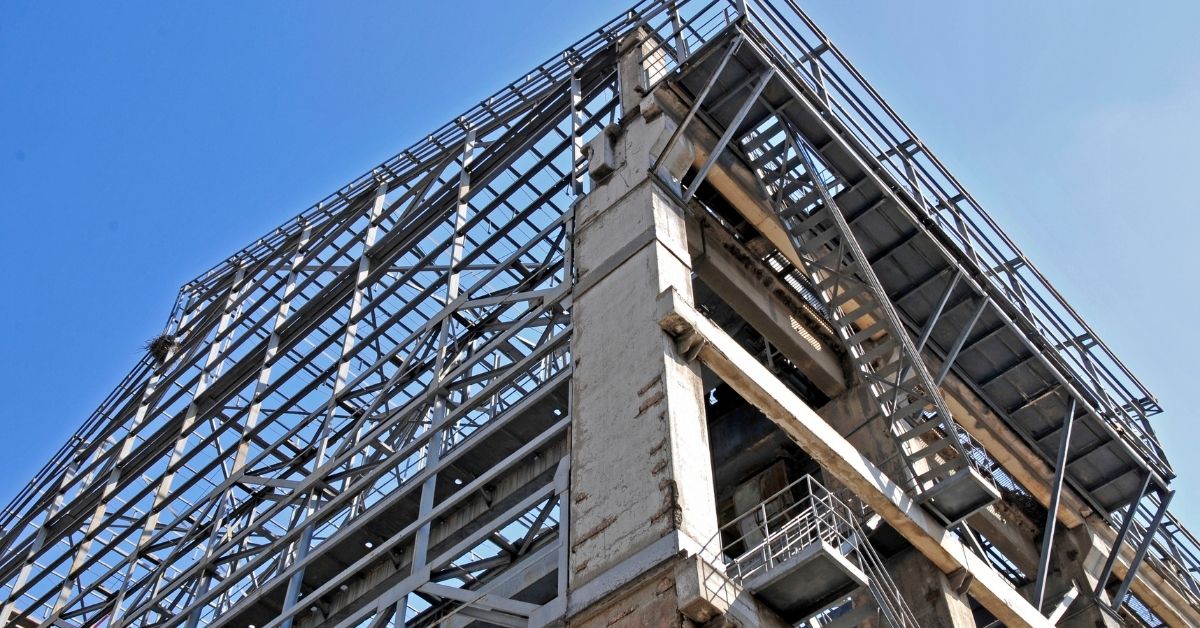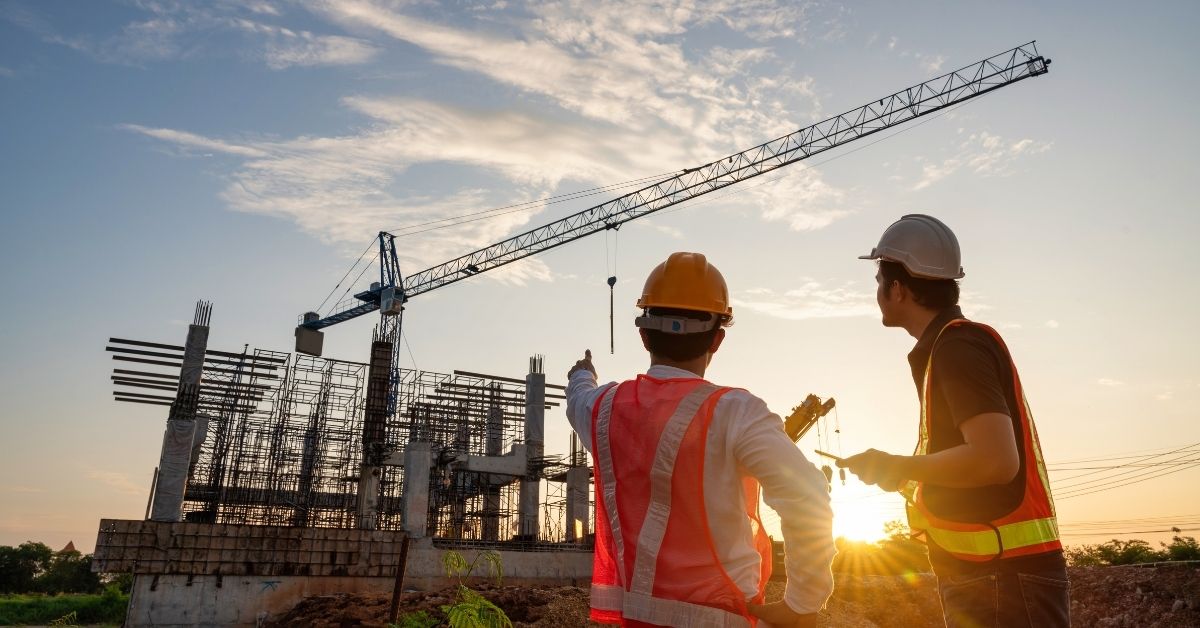
Avoid expensive repairs: before minor issues become major crises, set the time for your building structural inspection in Delhi NCR today . With the infrastructure of urban development boom and aging, active inspections can help protect your investment and ensure living safety.
What Is a Building Structural Inspection?
A building structural inspection in Delhi NCR is a thorough evaluation of the physical health of a structure.
This includes:
- Visual Examination for Cracks, Leaks, and Corrosion
- Non-destructive tests to assess hidden damage (NDT)
- Load-bearing analysis to check whether the structure can safely support the use of the current and future
- Material test to confirm power and quality
- Goal? To reveal any weaknesses before proceeding to structural failures or expensive repairs.
What is structural stability, and why does it matter ?
The structure in Noida refers to the ability of a building to withstand stability failure or excessive deformation. In other words, this means that your building is strong, safe, and is designed to tolerate environmental factors such as rain, air, and ups and downs. An unstable structure is not only unsafe - it creates legal, financial, and reputational risks. Early detection through regular audits can save lives and prevent property damage.
Why Structural Inspection in Delhi NCR Matters
- High Urban Density: With mixed residential, commercial, and industrial places, Delhi NCR structures face heavy use and environmental strain.
- Regulatory Compliance: Inspections align with local building norms and safety certificates, such as occupancy and fitness certificates.
- Safety Assurance: Early detection of issues reduces the risk of accidents.
- Longevity and Investment ProtectionInitial intervention protects the property and service life.
- Insurance Benefits: Many insurers require inspection reports to process claims following an incident of damage.
These drivers make building structural inspections in Delhi NCR required for smart property management.
Top 5 Benefits of Timely Inspection
| Benefit | Why It Matters |
|---|---|
| Prevents Major Failures | Identifies small defects like cracks and corrosion, avoiding structural collapse |
| Saves Money | Small repairs cost exponentially less than full structural restoration |
| Ensures Legal Compliance | Helps fulfill mandatory inspection laws for older or high-rise buildings |
| Increases Resale Value | Certified inspections boost buyer confidence and property valuation |
| Improves Occupant Safety | Regular checks reduce risks associated with hidden structural damage |
What Happens During an Inspection?
Delhi NCR usually includes a complete building structural inspection:
- Visual Survey - Assessment of beams, slabs, columns, walls, foundations, and visual installations.
- NDT methods - Ultrasonic Pulse Velocity (UPV), Rebound Hammer Test, and Cover Meter Scan detect hidden defects.
- Load Test - Examines structural elements for deflection under fake or actual weight.
- Material Test- Concrete and rebar samples can be tested in NABL-certified laboratories.
- Documentation-High-resolution photos, sketches, and sensor data are collected.
- Safety Evaluation - Identifies hazards such as exposed reinforcement, water seepage, or falls.
- Comprehensive Report - This includes conclusions, priority levels, deadlines, and cost estimates.
- Results: A roadmap for repairing needs and structural welfare.
General Issues Exposed in Delhi NCR Buildings

Inspection often reveals these recurring problems:
- Cracks in Beams and Columns - Signs of disposal, thermal stress, or overloading.
- Corrosion in Rebar - Corrosion causes concrete spalling and strength loss.
- Defects at Joints - Connection points between structural elements are often weakened over time.
- Water Intrusion - Carbonation, reinforcement leads to corrosion and mold.
- Uneven Settlement - Causes bending walls, wrong windows, and door frames.
- Quality of Poor Material- Substandard, concrete, or inferior sets reduce durability.
Detection of such issues allows for minor repairs to prevent structural damage and avoid the high cost of the future.
How Many Times Should You Inspect?
Frequency depends on building type and age:
- High growth or commercial structures: every 2-3 years
- Buildings over 15 years old: every 5 years (per Delhi/NCR rules)
- After extreme events: urgent inspection post-loss, waterlogging, or structural changes
- Being active reduces risk and costs.
Choosing the Right Inspection Partner in Delhi NCR
Here’s what to seek in a qualified agency:
- NABL Recognition - For lab test reliability
- ISO 17025 and ASNT-Certified NDT Technicians - Ensures testing accuracy
- Proven Local Experience - Understanding Environment and Construction criteria
- Advanced Testing Equipment - Use of UPV examiners, cover meters, drones, thermal cameras
- Detailed Reporting - Apparent presentation of findings, severity ratings, and recommended corrective actions
- Transparent Pricing and Timeline - Ensures no hidden cost and timely delivery
The selection of a local, recognized firm ensures cost-effectiveness and reliable results.
Cost Considerations and ROI

- Structure type (residential vs. commercial)
- Square footage
- high-income opportunities.
- Testing methods (NDT, load test)
- Number of floors
- Reporting complexity
The inspection cost varies on this basis:
However, ROI is enough:
- Minor repair now vs. major failure later
- Better resale value
- Avoid legal liabilities
- Compliance with rules and insurance requirements
For most owners, the cost of inspection is a fraction of the price of structural failure.
How to Prepare for an Inspection?
- Obvious non-structural obstructions
- Provide access to electrical/ventilation shafts, roofs, and basements
- the last maintenance or repair log
- Inform the people living about access and safety during the inspection
- Ensure adequate light and power supply A pre-visited checklist from reputed agencies can help to streamline the process.
- Executive Summary: Major risks and action priorities
- Detailed Conclusions: Categorized by severity
- Photographic Document: Helps imagine possible problems
- Recommendations: immediate vs long-term improvement
- Repair Cost Estimate and Timelines: Budget and Plan Guide
- Maintenance Schedule: Timeline for re-inspection
- Immediate Repair: Add immediate issues
- Plan and Budget: Schedule, Follow, and Future Investigation checks
- Regular Maintenance: Avoid recurrence of problems
- Internal Linking: Reference Maintenance for ongoing [Structural Audit] Services
To ensure a smooth process:
Post-Inspection: Understanding Report and Next Steps
A specific report must be included:
Post-reporting action includes:
Conclusion: Make Structural Safety a Priority
Building structural inspection in Delhi NCR is not just a formality - it is an important investment in safety, compliance, and cost savings. With the infrastructure of rapid urbanization and aging, delay in inspection may lead to expensive disasters.
If you are the owner, developer, or manager of a property, now is the time to work. Schedule your comprehensive evaluation, address structural weaknesses, and protect your investment and inhabitants.
For expert support and detailed evaluation, find out our special [ Structural Audit ] services - your trust anchor to create flexibility in Delhi NCR!
